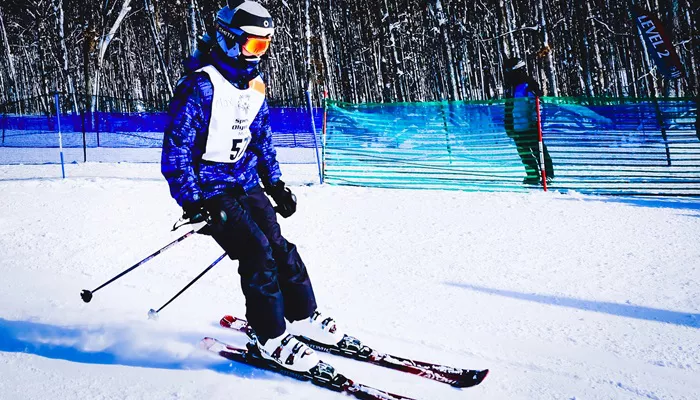Alpine skiing is a demanding sport that requires strength, skill, balance, and endurance. Professional athletes train hard to perform at their best during competitions. Training involves a mix of physical conditioning, technical skills, mental preparation, and recovery. Understanding how athletes prepare can give insight into what it takes to succeed in alpine skiing.
Physical Conditioning for Alpine Skiing
Building Strength and Power
Strength is crucial for alpine skiers to control their speed and direction on steep slopes. Athletes focus on leg muscles, including quadriceps, hamstrings, calves, and glutes. Exercises like squats, lunges, and deadlifts help build muscle strength.
Core strength is also important to maintain balance and stability. Planks, Russian twists, and medicine ball workouts target core muscles.
Improving Endurance
Endurance training helps skiers maintain energy and focus during long runs or multiple races. Cardiovascular exercises such as running, cycling, and swimming improve lung capacity and heart health. Interval training is often used to mimic the short bursts of high intensity in skiing, alternating between fast and slow paces.
Enhancing Agility and Balance
Alpine skiing demands quick changes in direction and balance on uneven terrain. Agility drills, balance boards, and stability balls are common tools for training. Athletes practice dynamic movements and rapid footwork to stay agile. Balance training reduces the risk of falls and injuries.
Technical Skills Training
On-Snow Practice
Nothing replaces practice on snow. Athletes spend many hours on the slopes, working on turning techniques, speed control, and carving. They learn to read the snow conditions and adjust their movements accordingly. Coaches provide feedback using video analysis to improve form and efficiency.
Simulation and Visualization
Off the snow, athletes use ski simulators to practice movements in a controlled environment. Visualization is a mental training technique where skiers imagine themselves performing perfect runs. This helps build muscle memory and confidence before hitting the slopes.
Mental Preparation
Focus and Concentration
Alpine skiing requires intense focus, especially at high speeds. Athletes train their concentration through meditation, breathing exercises, and mindfulness. These techniques help them stay calm under pressure and maintain sharp attention during races.
Handling Pressure and Competition
Competitive skiing involves managing stress and nerves. Sports psychologists work with athletes to develop coping strategies. Positive self-talk, goal-setting, and routine building help athletes prepare mentally for big events.
Recovery and Injury Prevention
Rest and Sleep
Recovery is as important as training. Adequate sleep allows muscles to repair and energy levels to restore. Skiers aim for 7-9 hours of quality sleep each night to perform well and avoid fatigue.
Injury Prevention Techniques
Alpine skiing carries a high risk of injury. Athletes focus on flexibility exercises and proper warm-ups to reduce muscle strain. They use protective gear like helmets and pads during training and races. Regular physiotherapy and massage help keep muscles healthy and prevent overuse injuries.
Nutrition for Alpine Skiers
Balanced Diet
Athletes fuel their training with a balanced diet rich in carbohydrates, proteins, and fats. Carbs provide energy, proteins help muscle repair, and fats support endurance. Hydration is also key, especially at high altitudes where dehydration risk is higher.
Supplements and Hydration
Some skiers use supplements like vitamins, minerals, and protein powders to support their nutrition. Drinking enough water and electrolyte drinks helps maintain energy and prevents cramps during training and competition.
Year-Round Training Schedule
Off-Season Training
When there is no snow, athletes focus on physical conditioning, strength training, and technical drills. Cross-training with activities like mountain biking, running, and gym workouts keeps their fitness levels high. This period helps build the foundation for the upcoming ski season.
In-Season Training
During the ski season, training shifts to more on-snow practice and recovery. Athletes balance skiing sessions with rest days to avoid burnout. Technical coaching and race simulations prepare them for competition.
Coaching and Support Team
Role of Coaches
Coaches design training plans, provide feedback, and guide technical improvements. They analyze video footage and track progress to help athletes reach their goals.
Support Staff
Besides coaches, skiers rely on physiotherapists, nutritionists, sports psychologists, and equipment technicians. This team ensures athletes stay healthy, well-nourished, and properly equipped.
Conclusion
Training for alpine skiing is complex and demanding. It requires a balanced mix of strength, endurance, skill, mental focus, nutrition, and recovery. Professional athletes dedicate themselves to rigorous training year-round, supported by expert coaches and staff. This holistic approach helps them perform at their best and safely handle the challenges of this extreme sport.

